
7 minute read
The "Water of the Marula" Festival
The Onambango Palace of Tate Omukwaniilwa Fillemon Shuumbwa Nangolo, the leader of the Aandonga community, was transformed into a colourful spectacle by thousands of people who attended this year’s Omagongo Festival. It was a truly vibrant event with the women dressed in their traditional ondelela dresses and men wearing their etenga shirts.
Omagongo, a name meaning “water of the marula”, is a refreshing alcoholic drink with a pleasant sweet-to-sour taste. The alcohol content depends on how long the juice has been left to ferment and averages between 4% and 4.5%. But the alcohol content of potent brews could be as high as 8%

Trees are owned by the families on whose fields they grow, but it is the responsibility of the women to tend to the trees and omagongo is brewed by households who have these marula trees on their fields. According to tradition, the first brew was presented to the king, queen or chief. It is also served to visitors and friends, as well as at weddings and special occasions.
The marula season stretches from late January to April/May when the trees bear fruits, which are still green when they fall off the trees. Once they have ripened, after about two to four days, they are collected and sorted according to how ripe they are by groups of women and girls. As the fruit of each tree has a distinctive flavour, the fruits are usually not mixed, except during years when the harvest is poor.
Neighbours are invited to help with the extraction of the juice, a social event which is referred to as the “Women’s Parliament”. Traditional songs are sung, poems are recited and jokes are told while the women are extracting the juice. It is also a time for the women to catch up with the latest gossip and an important occasion for the women to pass on their knowledge and skills to the young girls.
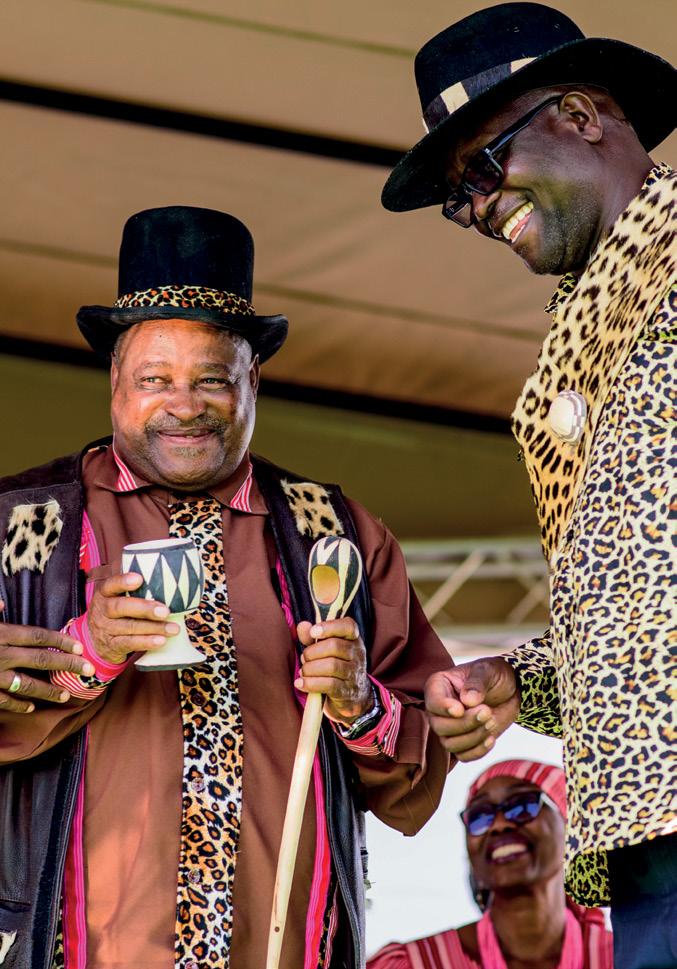
The leathery skin is pierced with the sharp edge of a cow’s horn to separate the juicy white flesh from the kernel and is squeezed by hand into a clay pot covered with a cloth. It is then stored in a cool, dry place to ferment for between one and seven days, depending on the required alcohol content. It is a time-consuming chore which is increasingly being replaced by mechanical presses today.
As people’s judgement could be impaired when they are under the influence of the popular drink, the carrying of any type of weapon is prohibited during the marula season. Sittings of community courts are also suspended during this time.
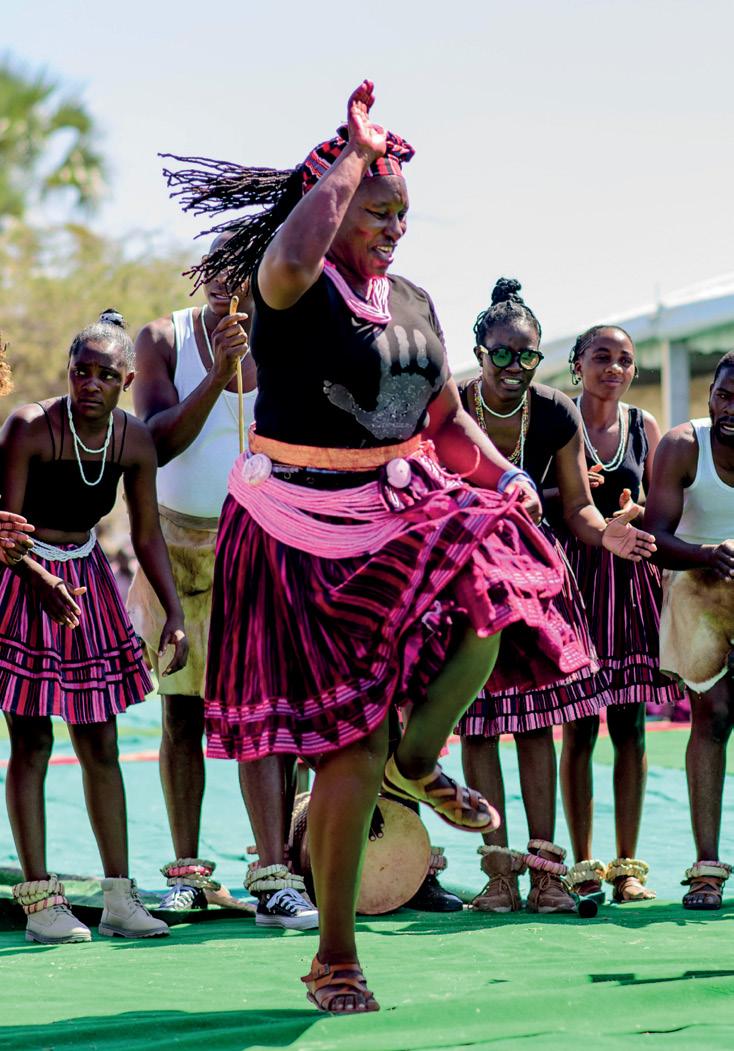

The Omagongo Festival is about much more than simply enjoying omagongo. It is a time of sharing what nature has provided and it brings people together. It also reinforces the subsistence and economic value of the marula tree, as well as the diverse cultures and history of the eight Aawambo communities. It is also a demonstration of inclusiveness as everyone is welcome to attend the festival.
Omagongo ceremonies were initially celebrated separately by the eight Aawambo communities. Following the inscription of the Oshituthi shomagongo (marula fruit festival) in the UNESCO Representative List of the Intangible Cultural Heritage of Humanity in 2015 in recognition of the important role omagongo plays in the culture and socialisation of the Aawambo, the first combined ceremony was held in Ondonga in 2016. It has since been rotated annually among the eight Aawambo communities.
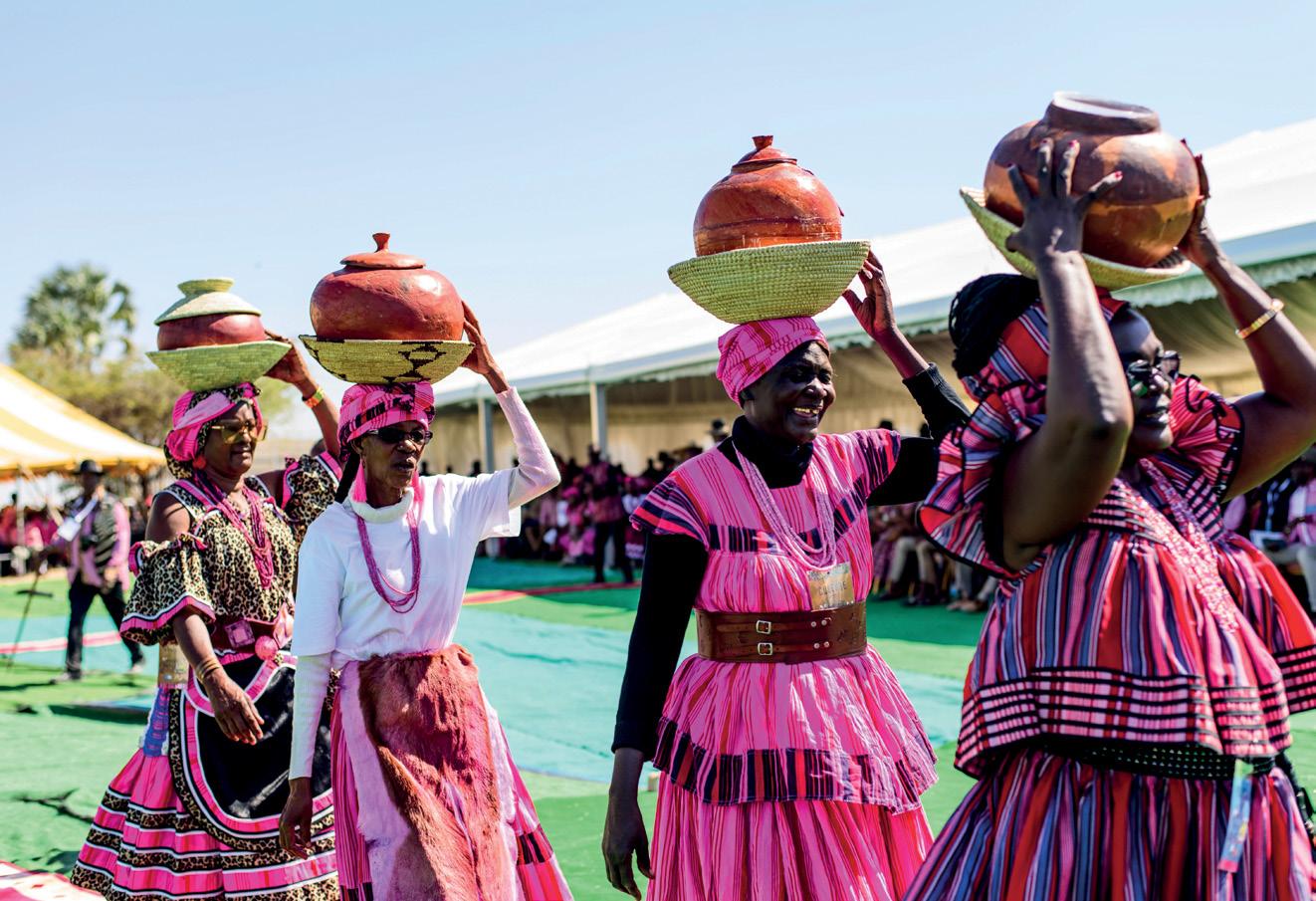
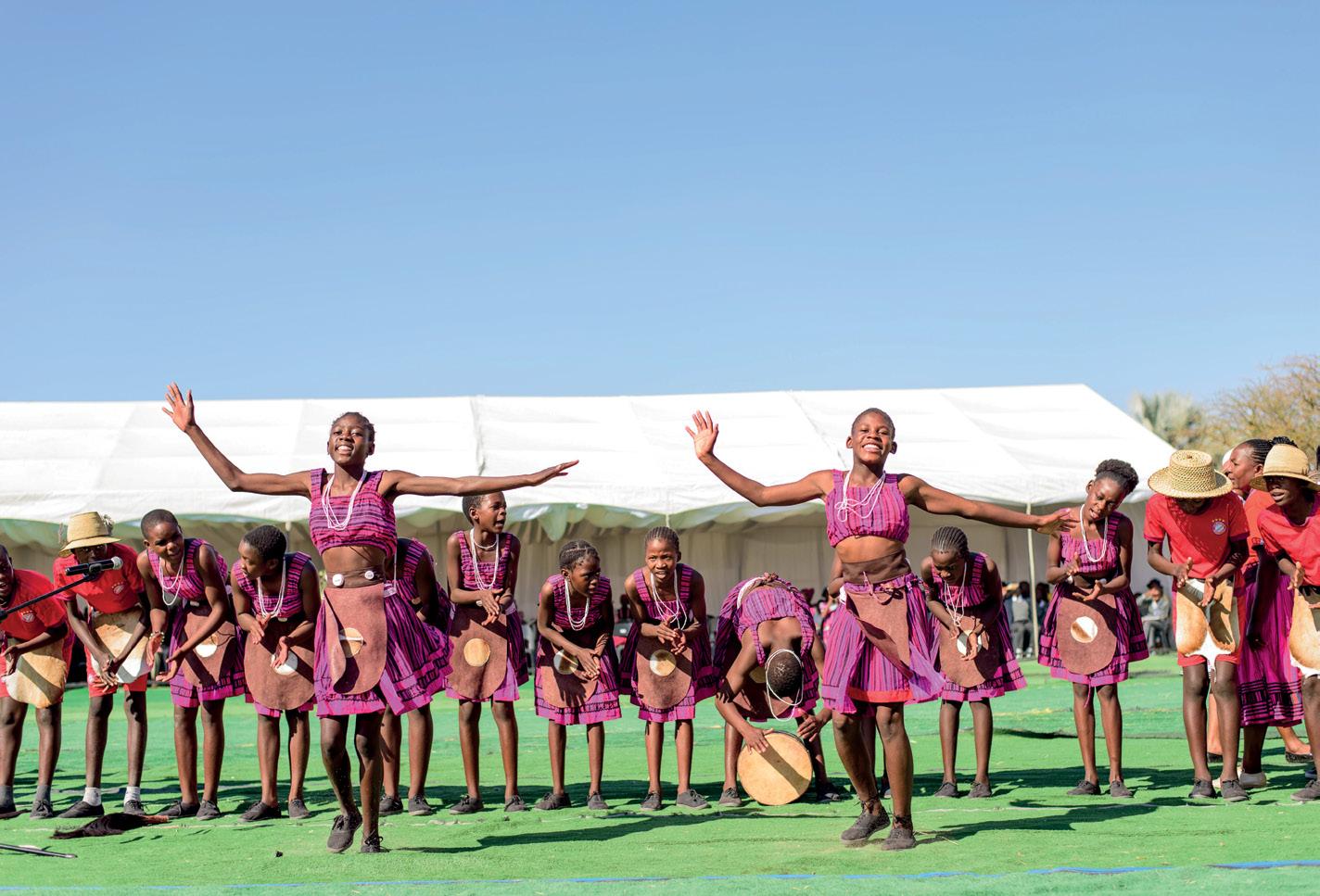
The Omagongo Festival is about much more than simply enjoying omagongo. It is a time of sharing what nature has provided and it brings people together.
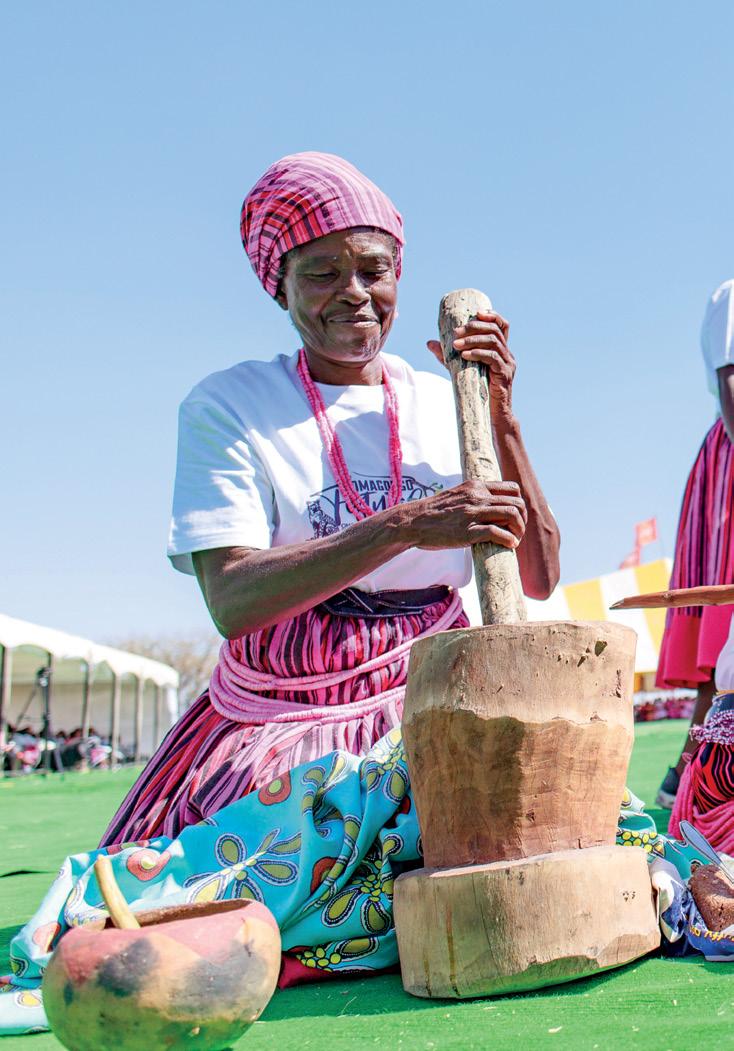
The main event is usually preceded by Oshungi (storytelling) on the Friday. The programme features the history of the Aawambo, cultural performances and dances as well as the reciting of poems, while stories are told around the fire in the evening.
This year’s festival was attended by President Nangolo Mbumba, Vice President Netumbo Nandi-Ndaitwah, Prime Minister Saara Kuugongelwa-Amadhila, leaders and representatives of various traditional authorities and a long list of other dignitaries. Speeches were interspersed with ululating and numerous cultural and dancing performances which kept the crowd entertained. Highlights on the day were a demonstration of how the omagongo is produced and the presentation of the omagongo by a long line of women, balancing the clay pots of omagongo they had produced on their heads.
The marula tree is not only valued for its omagongo. It is one of the most valued trees in Owambo with a multitude of other uses. It is the first tree to bear fruit after the mahangu has matured and the ripe fruit is eaten as a snack, or used to make jam or marula jelly. The fruit contains two-and-a-half times as much vitamin C as orange juice per 100 g and also contains citric acid, malic acid and sugar.
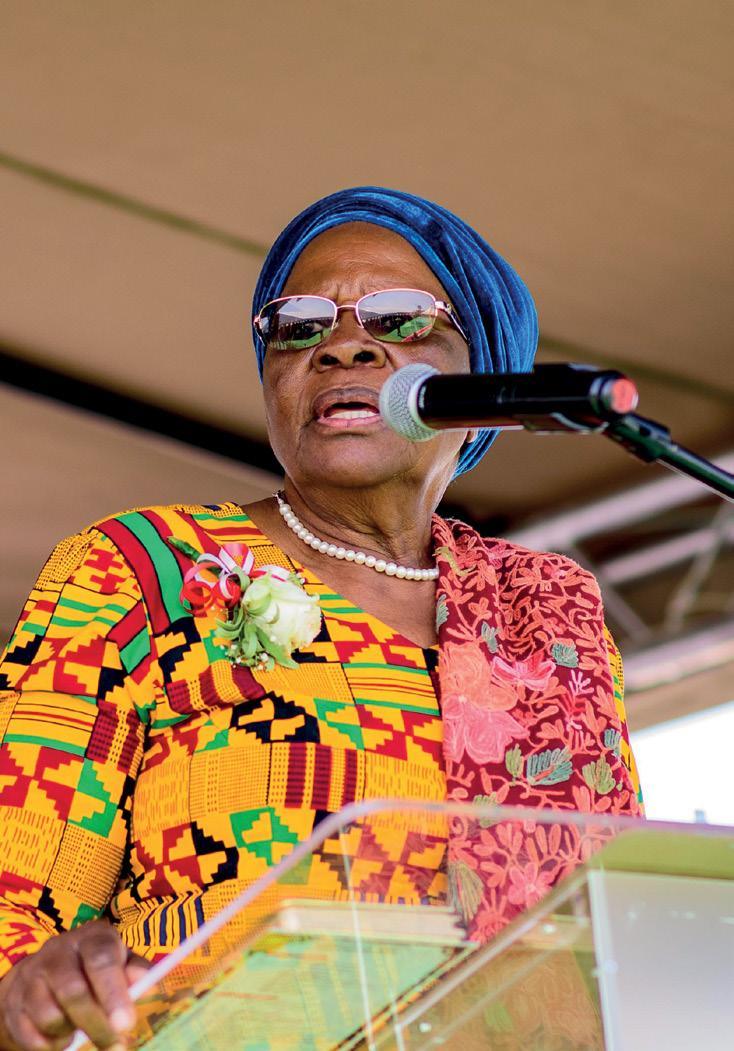
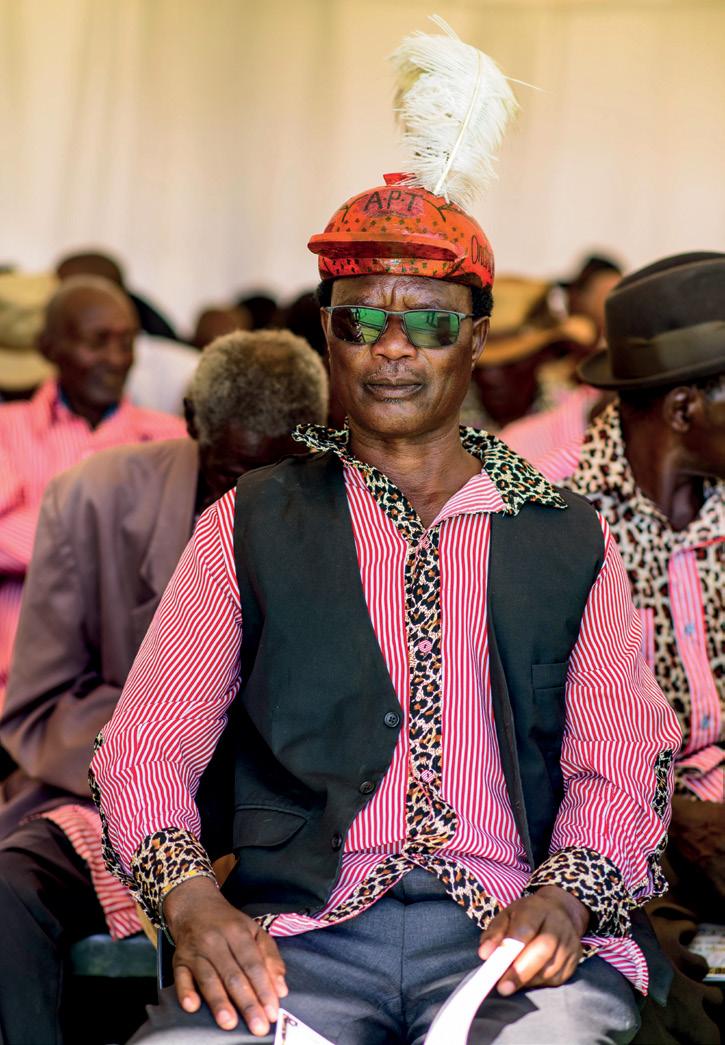
A refreshing non-alcoholic beverage, oshinwa, is made by adding water to the flesh and seed remaining after the juice has been squeezed and left to stand overnight. It is especially enjoyed by women and children.
The nuts squeezed out of the skins are dried in the sun and processed by women after the mahangu harvest. The nuts are pried open and two or three kernels are extracted with a needle or flattened nail. The kernels, which have a nutty taste and a protein content of about 28%, serve as an important food supplement. The kernels can be eaten raw as a snack or roasted lightly before it is consumed.
Marula oil is produced from the kernels which have an oil content of close to 46%. The kernels are pounded with a pestle in a wooden mortar to extract the highly prized oil, which is used for cooking or enjoyed with porridge and as a condiment with various other dishes. The oil is also used for a variety of cosmetic products, ranging from face and body creams, soap and lip balm to hair and nail products.
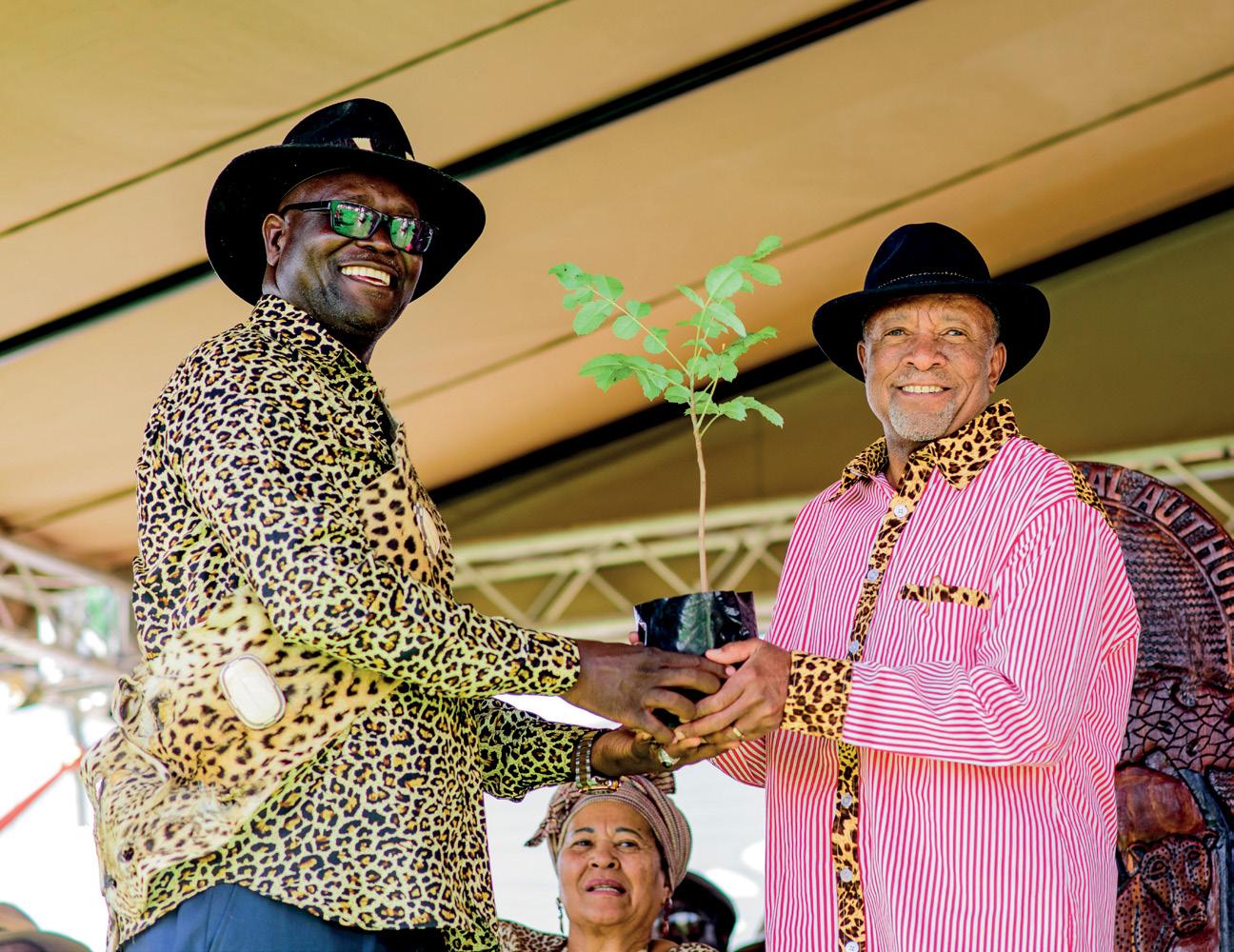
Nothing of the marula tree is wasted. The seed cake left in the mortar is removed and used as a food additive or eaten as a snack. The skins are used as a supplement for livestock or dried for later use as fodder. It is also ploughed into the fields as a fertiliser.
With the 2024 Omagongo Festival something of the past now, life in Owambo has returned to normal – until the start of the next season. Next year’s Omagongo Festival will be hosted by the Oukwanyama and Ombadja traditional authorities.











